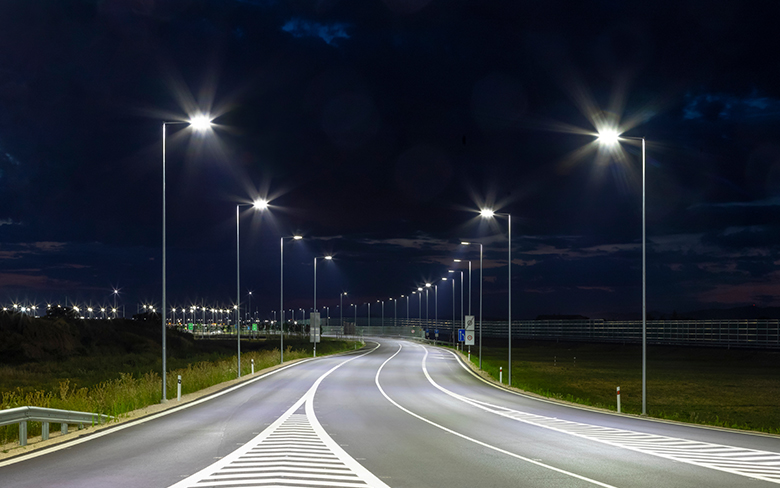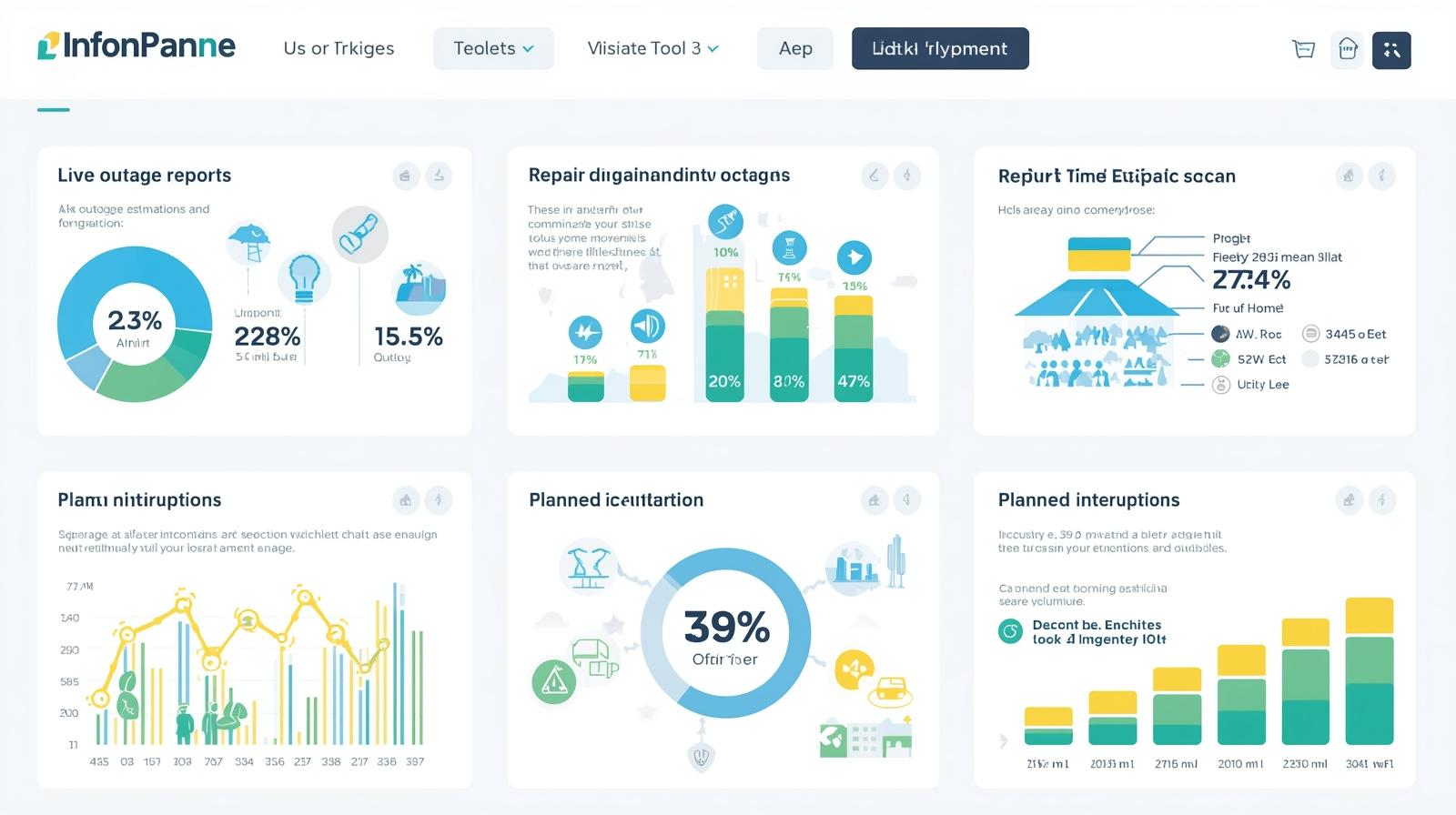LED street lights have transformed suburbs and cities. They are energy-efficient, long-lasting, and brighter. They are vital for making sidewalks, streets, and public places safer and more visible. While LED tech is often the focus, outdoor street light efficiency depends on various accessories. They affect performance and durability.
This article will explore Outdoor LED Street Lights. We’ll detail their key parts, roles, and importance. We’ll also discuss tips to maximize the benefits of LED lights. It’s crucial to understand these elements. They include sensors, brackets, control systems, and security equipment. This knowledge ensures optimal street lighting performance.
Mounting Brackets and Arms
One of the essential pieces of equipment required for Outdoor LED Street Lights is the mounting bracket or arm. These are the key parts for mounting your street lights on walls or poles. They keep the fixture secure and stable. Street lights may need to be aligned or even fall with the proper mounting brackets, which could pose safety hazards.
Many kinds of brackets are designed to respond to various mounting needs:
Straight Arms often use brackets. They prepare an easy, vertical mounting for light fixtures. They are perfect for major roads and highways in areas where uniform light distribution is required.
Curved or Gooseneck arms: These arms are made to prepare an exact angle or curve to light on the streets. They are typically employed in areas where certain lighting angles are needed, like parks, residential, or urban areas.
Swivel Mounts The mounts provide greater flexibility for altering an angle for the fixture, which is why they are useful; the light angles have to be adjusted for greater coverage.
These brackets are usually constructed of tough materials like aluminum or galvanized steel, which are resistant to wear and rust when exposed to harsh outdoor conditions.
Photocells and Motion Sensors
A major feature of the latest outdoor LED streetlights is their capacity to conserve energy. One way to fulfill this is by making use of light sensors as well as motion sensors.
- Photocells detect light, automatically turn street lighting on when it gets dark, and shut it off after dawn. This ensures that lights turn on only when needed, which reduces energy use during the daytime. Photocells are essential in lighting public areas since they can eliminate the need to operate manually or set timers.
- Motion Sensors Motion sensors are important, particularly in areas where constant lighting is not required. They detect movement and trigger street lights when cars or pedestrians walk by, optimizing energy use. In areas that are quiet or late at night, light fixtures that are activated by motion can drastically lower electricity bills while offering safety in the event of a need.
Combining these two technologies and LED street lighting provides an extremely efficient solution, ensuring that the lights will be operational only when required.
Surge Protectors
Outdoor lights face a major issue: exposure to the elements, especially in extreme weather. LED streetlights are vulnerable to power surges from lightning or grid changes. These surges could damage the lights’ electronics.
Surge protectors, sometimes called surge suppressors, are vital accessories to protect your LED lights against electrical surges. These devices block high voltage from reaching the light fixture. They protect the LED’s driver and extend the lighting’s life. Without a surge protector, a single surge can damage or destroy many lights. This can lead to high repair and replacement costs.
Street lighting is located in areas that are susceptible to storms. Investing in the best surge protectors is crucial to maintaining a stable lighting infrastructure.
LED Drivers
One of the most overlooked components is outdoor LED street lights, the drivers for LEDs. The driver for LEDs is an essential part that controls the power supply on the chips of LEDs. It converts the electric grid’s alternating voltage (AC) to the direct current (DC) that LEDs need.
A quality LED driver ensures that the LEDs get a continuous and reliable power source, which is vital to warrant optimal performance. Drivers also regulate the dimming capabilities that street lamps have, which allows the lights to function at different intensities depending on the moment of night or day. This does not just extend the life of the lights but can also increase their energy efficacy by cutting down on the brightness during low lighting.
The driver plays a crucial part in regulating the brightness’s output and duration. Selecting a durable and reliable driver is vital to maintaining the efficiency of street lighting.
Heat Sinks
Heating management is a crucial element in the efficiency of LED street lighting. While LEDs produce less energy than traditional light sources, they generate some heat in their operation. If the heat isn’t efficiently dispersed, it may decrease the lifespan of LEDs and reduce their brightness.
They are devices designed to remove heat from LEDs and spread it over a greater area. They are typically constructed from aluminum or any other materials that conduct heat. They are placed on the bottom of the fixture. They function by moving energy away from the light source, allowing the fixture to stay cool and prolong the life of LED chips.
Inadequate heat management can cause heat management problems or reduce light output. That’s the reason heat sinks are a crucial component that warrants the effectiveness and longevity of outdoor LED street lights.
Control Systems
With the development of smart technology, streetlights are increasingly interconnected with control systems. Control systems enable cities and municipal officials to control, modify and maintain street lighting infrastructure from a distance.
There are many types of control systems utilized for LED lighting.
- Centralized Control Systems They connect all the street lights within the zone to a central control station. There, operators can examine their condition, adjust the brightness, and even detect malfunctioning lights. This real-time control reduces manual inspections. It ensures optimal lighting for safety and energy efficiency.
- Wireless Control Systems technology connects street lights to controllers. It does this without needing physical cables. This reduces installation costs. It also makes it easier to integrate smart lighting into urban areas. Wireless systems are especially useful in places where wired systems are still.
Cities can use advanced control tech to improve streetlights. They can program dimming times, find broken lights, and adjust output based on weather or traffic. This will boost effectiveness and sustainability.
Lenses and Optics
The lens or optics can determine the light distribution of one LED fixture. For street lighting, proper distribution is key. It must light walkways and roads without causing glare or light pollution.
- Asymmetric lenses: They direct light to one side. This ensures good coverage of streets and walkways while wasting less light.
- Symmetric Lenses: Symmetric lenses spread equally in all directions. They suit open areas and parking spaces.
LED street lights often have various lens options. This lets city planners tailor the light distribution to a location’s needs. The best optics ensure light reaches a target. They reduce light spillage and improve visibility.
Poles and Bases
The light fixture gets the most attention. But, the base and pole holding the holder on the ground are also essential. Poles must be durable and strong. They must withstand rain, wind, and other stressors. Also, poles vary in size, material, and finish based on their use.
- Aluminum poles are light and resist corrosion. So, they are suitable for high-humidity or coastal areas.
- Steel Poles: Steel poles are very durable. They can support larger fixtures. They are often used in high-wind areas or to support a light fixture.
The base, also known as the foundation of the lamp, is important to consider. It must be secure and solid. This will keep your streetlight in place and working during severe weather.
Decorative Elements
LED street lights have useful accessories and practical features. They can be custom-designed with decorative elements. These include decorative poles, custom finishes, and decorative arts. They draw attention to the lights, especially in parks and upscale neighborhoods.
While these lights don’t affect the street lights, they may improve the area’s ambience. They could enhance a city’s or community’s visual appeal and atmosphere.
Conclusion
The success of Outdoor LED Street Lights goes beyond their technology. The many accessories, like brackets and surge protectors, are vital. They ensure the lights work safely and last a long time. Understanding the components can help municipal and urban planners, and homeowners. They can make better choices about their lighting. This ensures they get the desired quality and value for their investment.
Cities can use the right vendors and accessories. This will ensure their LED street lights are durable, energy-efficient, and meet modern needs.








